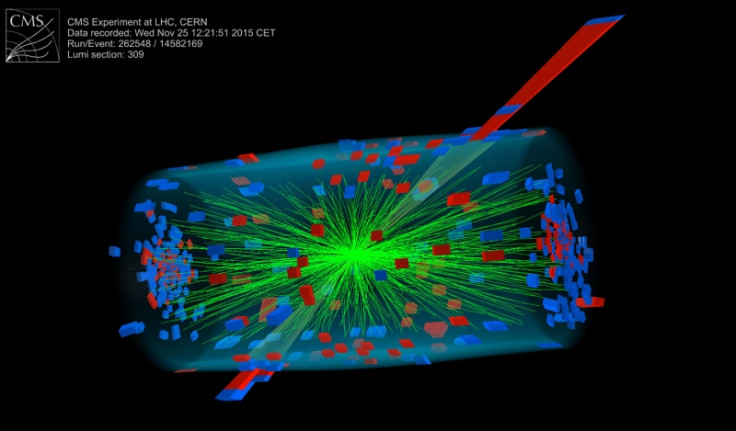Cern: Record energies create matter similar to that formed immediately after Big Bang

The Large Hadron Collider at Cern in Geneva has created a state of matter realised immediately after the Big Bang. This was achieved using lead-ion collisions at 1000 TeV, a record energy about twice as high as that of any previous collider experiment. The experiments will help understand the properties of strongly interacting systems similar to matter in the universe shortly after the Big Bang.
The LHC has been colliding protons for some time this year at around 13 TeV since the collider resumed operations after a two-year shutdown. As lead atoms contain the electric charges of 82 protons, the machine can accelerate them to 82 times the energy of a proton beam, allowing energy to reach 1045 TeV in the collisions. Increasing the energy of collisions will increase the volume and the temperature of the quark-gluon plasma, taking it closer to matter immediately following the Big Bang.
The lead-ion beams were put into collision for the first time in the early morning of 17 November 2015 and 'stable beams' were declared on 25 November. More than 30,000 particles can be created in a collision between two lead ions. This corresponds to an unprecedented energy density that is more than 40 times the energy density of a proton.
"The collision energy between two nuclei reaches 1000 TeV. This energy is that of a bumblebee hitting us on the cheek on a summer day. But the energy is concentrated in a volume that is approximately 10-27 (a billion-billion-billion) times smaller. The energy concentration (density) is therefore tremendous and has never been realised before under terrestrial conditions," explains Jens Jørgen Gaardhøje, professor at the Niels Bohr Institute at the University of Copenhagen and head of the Danish research group within the Alice experiment at Cern.
During collisions, most of the kinetic energy of the colliding particles is transformed into matter in the form of a host of new particles (quarks) and their antiparticles (antiquarks) as dictated by Einstein's E=mc2 equation. This soup of quarks and antiquarks at a temperature of over 4000 billion degrees is held together by the strong force meditated by fundamental particles called the gluons.
Approximately one millionth of a second after the Big Bang, quarks and gluons became confined inside the protons and the neutrons. This state has now been realised in the lead collisions at Cern.
"It is a tradition to collide ions over one month every year as part of our diverse research programme at the LHC," said Cern director-general Rolf Heuer. "This year however is special as we reach a new energy and will explore matter at an even earlier stage of our universe."
The four large LHC experiments – Atlas, CMS, LHCb and Alice -- will all take data over this campaign. "There are many very dense and very hot questions to be addressed with the ion run for which our experiment was specifically designed and further improved during the shutdown," said Alice collaboration spokesperson Paolo Giubellino. "For instance, we are eager to learn how the increase in energy will affect charmonium production, and to probe heavy flavour and jet quenching with higher statistics. The whole collaboration is enthusiastically preparing for a new journey of discovery."
In earlier LHC experiments the perfect liquid nature of the quark-gluon plasma had been confirmed as also the existence of "jet quenching" in ion collisions, a phenomenon in which generated particles lose energy through the quark-gluon plasma.
The LHC detectors were substantially improved during the LHC's first long shutdown. Earlier this year, the LHC broke its own previous record by colliding protons at 13 TeV in the centre-of-mass, thanks to higher-field magnets and an extended ring.
The world's largest and most powerful particle accelerator consists of a 27km ring of superconducting magnets with a number of accelerating structures. It first started colliding particles on 10 September 2008.
© Copyright IBTimes 2025. All rights reserved.





















